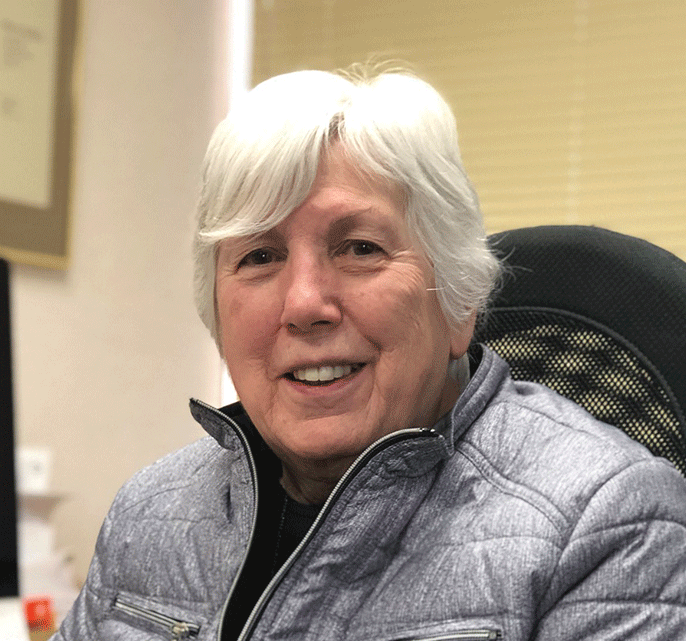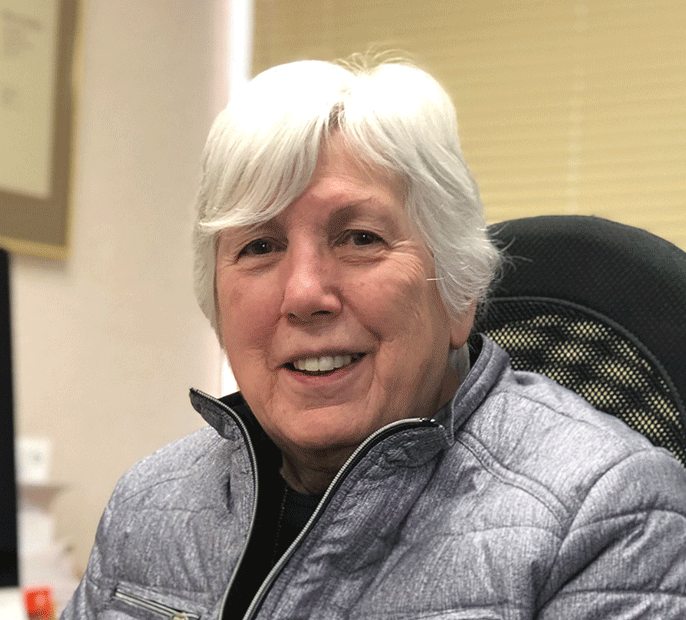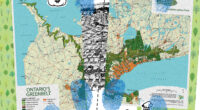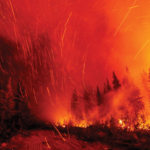‘Voice of Canada’s far North’ closed its Yellowknife offices last year

In May 2023 publisher Marion LaVigne announced that Up Here magazine, the voice of Canada’s North, was up for sale. The magazine shut down its offices in Yellowknife and has since been operating from her home. LaVigne spoke to the Review about the future of Up Here and the future of print magazine industry in general as its business model struggles to sustain itself.
What new ideas are in the works to ensure that journalism for the North remains intact?
Everybody talks about the death of magazines, and newspapers seem to be dying a slow death. Magazines have to be a lot more innovative than they are now. They have to look at new directions. I’m not a believer that electronic publications are going to be the answer. It’s going to be different looks for magazines, or different kinds of content, and rather more involvement of the reader in the magazine and giving the people a lot more of what they want. I’ve done a magazine for 40 years here in the North. It’s kind of easy because people don’t know anything about the North. So everything we tell them is new and different, although it’s old hat to us. Most of those readers are in the south. We’ve even looked at having northern magazines for different age groups. Can we serve our whole readership with one publication? Should we have something that’s geared more to older people, something that’s geared more to kids? There’s a million ways of looking at it, and I just don’t think that magazines are making a lot of changes these days.
Having magazines for different age groups—is that something Up Here is actively working on?
It’s something that we’ve looked at and played around with. All of them would be under the Up Here banner, but when you talk about the North, you always talk about north of 60, like the 49th parallel for the U.S. and Canada. The 60th parallel is where the North starts, so we were going to call our magazine for seniors “North of 60.” And, you know it was going to be for seniors, mainly in the North. We haven’t done anything about it. It needs some keen young people who really want to try some new ideas.

Since Up Here magazine has such a specific demographic, representing the North, how does the business side of the magazine differ from other magazines that are specific to southern Canada?
We actually suffer from what we call the split personality. Half our readership lives in the North, they know about northern things. They’re interested in seeing what we have to say about the North. And the other half don’t know anything about the North. So we always have this balancing act that we have to go through. For example, our magazine is the seat-pocket magazine of the main Canadian northern airline in Nunavut. It is the only airline that services all of Nunavut. Most people, if they want to go anywhere, have to fly. So they see our magazine in the seat pocket. We know we have this dedicated northern group, and we know that they’re interested in certain things. They’re also our worst critics. Then we have the southern group, who don’t know an awful lot about it, who sort of wonder what’s going on. We’ve spent a lot of time trying to reach the southern groups. Another thing that’s happening all the time in magazines is that obtaining and servicing subscribers is very expensive.
How can you reach the kind of people advertisers want to reach without a large subscription base?
We found the ideal way, which is a lot cheaper to service. What we do is, every issue, we take about 10,000 copies of our magazine and we insert them in home delivered copies of The Globe and Mail. If you’re a subscriber to the Globe, it depends. We move it all around the country. Sometimes it goes to Vancouver, Victoria, Edmonton, Calgary, Ottawa. We pick different things because you can pick them till they add up. And we believe that the demographic of Globe readers is very similar to what our readers want. That’s something that we’ve taken up doing. We’ve spent less time and money concentrating on getting new subscribers, as opposed to reaching the right kind of people who we think want to read this kind of magazine. Plus, as I mentioned, we have distribution by an airline. They take probably 8,000 copies every issue. In the summertime, we do a lot of special distribution to visitors, so it’s in every visitor centre in all three territories. So if they want to pick it up, and some of them subscribe afterward. But again, it’s reaching that particular market of visitors to the North.
How is Up Here combating the rise of AI and its impact on journalism?
There haven’t been many impacts because we’ve been ignoring this stuff. We have a limited digital presence—a website and some social media things. It’s kind of a part-time job for one of our editorial staff. So it’s there and it’s another thing that we have to do more about, but we haven’t really even considered it. No impact. I hate it, personally.
This interview has been edited for length and clarity.
About the author
Prarthana is a second-year Master of Journalism student at TMU. She’s an assistant reporter at the Investigative Journalism Bureau and a producer for Beyond the U podcast series at Toronto Met Radio. She additionally has work published in Maclean’s, Broadview, and other publications. She is passionate about sharing socio-political stories about displaced and vulnerable communities on a global scale.











